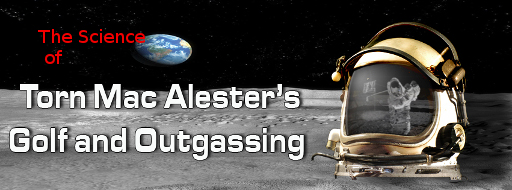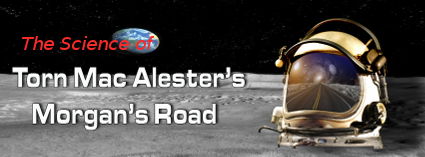Part 2 of World Building for Science Fiction
Part 2—It starts with a paradox
Photo by Rakicevic Nenad from Pexels
The Fermi paradox tries to answer: Where are they (the aliens)? It looks at how fast travel is across the galaxy. It says by inference the time to explore the 100 billion solar systems within the galaxy. The paradox assumes that the first civilization to emerge will find itself alone the cosmos. Because they find themselves alone, the civilization will try to figure out the answer to the question: Where are they? This article will show possible for a civilization to answer this question.
First off, we show that this question is not an unreasonable one. Using the laws of nature, a civilization realizes that another scientifically advanced civilization could exist elsewhere. They’ll realize their star is one of 100 billion within the galaxy. They’ll build telescopes and discover other planets orbiting those stars. They’ll contemplate life on those planets and wonder about intelligent life. The first civilization to emerge will listen to the cosmos. Failing to detect another civilization, they’ll question their assumptions. Eventually, they will ask and answer it.
To carry out the answer, the civilization needs to explore every solar system in the galaxy. Can this be done? One solution is by colonizing every solar system and preparing to explore as they move outward. The home world sends out colonizer spaceships to two nearby solar systems. Each of the colonizers establishes a colony to build colonizers that explore two more solar systems and so forth. If it takes 10 years to make the journey and two generations before the next colonizers are ready, then the doubling time for explored systems is 50 years. So, 50 years at a pace, the number of ships exploring doubles, and fifty years at a time, the number of systems doubles. If the galaxy were spherical with the civilization’s home world at the center of the sphere, the doubling proceeds for 1850 years until they explore 100 billion suns. Since the galaxy is not spherical, we must account for the size and shape of the galaxy in the calculations.
The diameter of our galaxy’s disk is over 100,000 light years. The light crossing time is 100,000 years. If a reasonable largest speed (using Einstein’s special relativity) is half the speed of light, then the spaceship takes 200,000 years to cross it. Using the fifty-year delay to set up the next colony, the crossing time is about two million years. If civilizations last hundreds of millions of years, two million years seems less than daunting.
An important consideration of this idea is looking at the escape speed of a solar mass star. The escape speed is the speed leaving the solar system determined from Newton’s universal law of gravity. That speed for our sun is 42.1 kilometers per second (km/s). Let’s use that speed to travel a light year or 6 trillion kilometers (that is 6 with 12 zeros or 6x1012 km). We find it takes nine thousand years to travel that distance.
A spacecraft leaving at the escape speed of the sun will take longer than human civilization has existed to travel the distance. Scaling up to the size of the galaxy makes the journey across the galaxy at 900 million years. With the universe being 13.5 billion years old, 900 million years is short. Even the Earth, at 4.5 billion years old, is older than the time it takes an object to cross the galaxy at 42.1 km/s—such a speed means it can happen over four and a half times over the current age of the Earth.
We will consider the travel times computed in the last paragraph with great interest when we examine panspermia in a future article. We realize that a long lived (billion-year plus) civilization will cross the galaxy at an easily attainable speed. The key point of the Fermi paradox is that thoroughly exploring a galaxy is doable in enough time.
As an emerging civilization, humanity has sent probes on interstellar journeys (e.g. Voyager’s 1 and 2). Humanity’s largest speeds are on order of 42 km/s, slower than the 300 thousand km/s of the speed of light. Going faster makes the journey’s shorter. And shorter distances make the exploration of the galaxy easier. So, we can contemplate our eventual exploration of the galaxy. If we contemplate it, why could not another alien civilization contemplate it? If they could contemplate it, why is there no evidence? Hence, this is Fermi’s paradox. The first civilization might ask: Are we alone?
A recent television science fiction series revolved around a spaceship stranded on the far side of the galaxy after accidentally traveling through a wormhole. The spaceship estimated that their journey time back home to take seventy years—an average speed of 1,429 times the speed of light. The series lasted seven years for them to return home—an average speed of 14,290 times the speed of light.
We can continue with the science fiction example. We need to determine the time to explore all the solar systems in the galaxy using their technology. We first assume a negligible time to explore a solar system and the average star separation of 4 light years. The journey will explore twenty-five thousand solar systems. They cross the entire breadth of the galaxy. Exploring four hundred-billion solar systems requires sixteen million vessels to complete the task.
To double the number of spaceships, to reach 100 billion requires you to double the number thirty-seven times. But the number of doubling to reach 16 million is twenty-four. Now it becomes a matter of how rapid the doubling takes place. In our original example at half the speed of light and a fifty-year doubling time, it takes 1850 years to double to 100 billion, or 1200 years to double to 16 million. The conclusion for calculating the doubling times is to show that sometimes, such as the half the speed of light, the speed of travel is limiting. But, with the superluminal speeds, the ability to build interstellar spaceships (AKA the doubling time) is limiting.
The main take-away from this article is that a civilization capable of a journey to the stars can visit every solar system in the galaxy in a short time compared with cosmic time scales. A reasonable conclusion based on the size of the galaxy; some civilization would have made this effort. The paradox is why we haven’t found the evidence for that occurring—and if we create a science fiction universe, what is the evidence?
As a science fiction world builder, the first decision is how fast can a spaceship cross the galaxy. This amounts to making a hard choice. Is faster than light travel possible? Once we know the largest speed, we find the time it takes a civilization to explore the galaxy completely. There are more considerations beyond these, but they will wait for future articles.
In future articles, we will revisit the Fermi paradox. We’ll try to estimate the expansion rate of a civilization across the galaxy and what this will mean if multiple civilizations exist. We’ll examine at the Fermi paradox as it applies to panspermia. Next time, we’ll look at the levels of civilizations based upon their technology. We know it as the Kardashev scale.



